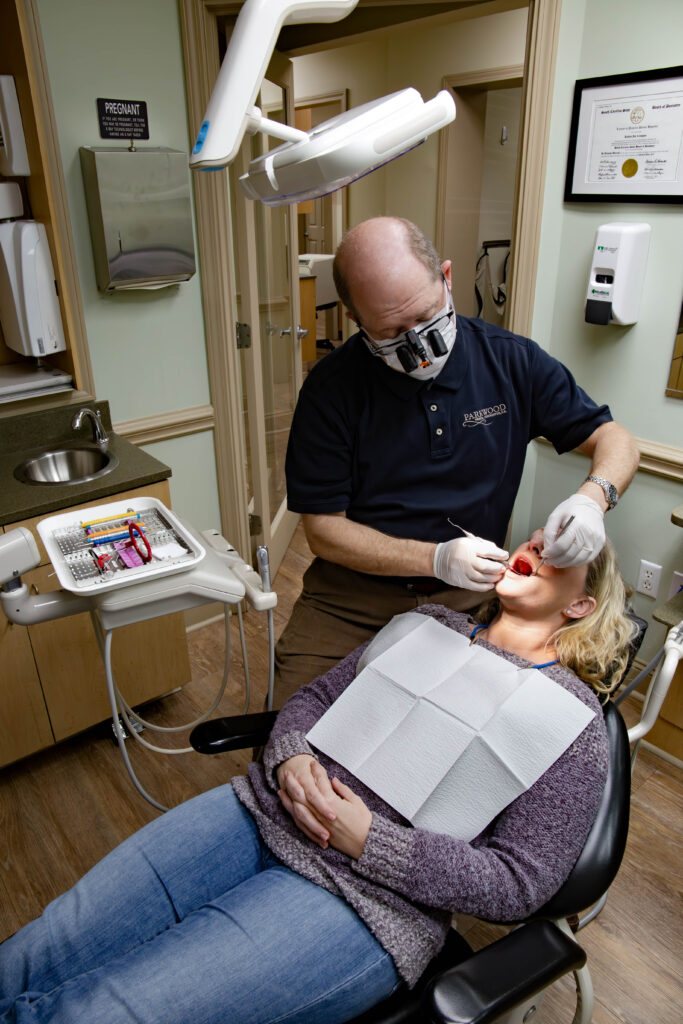Dental Crowns
A crown (or cap) is a synthetic covering that encases the entire damaged tooth surface, restoring it to its original shape and size. Crowns provide protection and strength to tooth structure that cannot be repaired with fillings or other types of restorations.
There are various types of crowns, with non-metallic porcelain being the most popular choice because it closely resembles natural teeth. These crowns are highly durable and can last for many years, but like most dental restorations, they will eventually need to be replaced. Porcelain crowns are designed to match the shape, size, and color of your teeth, giving you a natural-looking, long-lasting smile.

Why would I need a Dental Crown?
- The tooth may be damaged.
- You may have stained or deteriorating fillings.
- You may have undergone a root canal, which might necessitate a crown.
- Your teeth may have been affected by an unfortunate accident.
Types of Dental Crowns
There are several different types of dental crowns:
Ceramic: These are commonly used for restoring front teeth and are favored for their ability to blend seamlessly with your natural tooth color. The crown is made from a porcelain-based material.
Porcelain-fused to metal: This type of crown offers a stronger bond than regular porcelain because it is anchored to a metal structure, making it extremely durable.
Gold alloys: This crown is composed of a mix of gold, copper, and other metals. It provides a strong bond to the tooth, resists fracturing, and does not wear away the tooth itself.
What is the procedure for placing a crown?
The procedure for placing a crown usually involves two appointments. During your first visit, several highly accurate molds (or impressions) will be taken to create your custom crown. A mold will also be used to make a temporary crown, which will remain on your tooth for about two to three weeks until your new crown is ready.
While your tooth is numb, the dentist will prepare it by removing any decay and smoothing it to ensure a proper fit for the crown. Once this is done, the temporary crown will be secured using a bonding adhesive, and your bite alignment will be checked.
At your follow-up appointment, the temporary crown will be removed, the tooth will be cleaned, and your new crown will be carefully placed with bonding material to ensure proper spacing and bite alignment.

